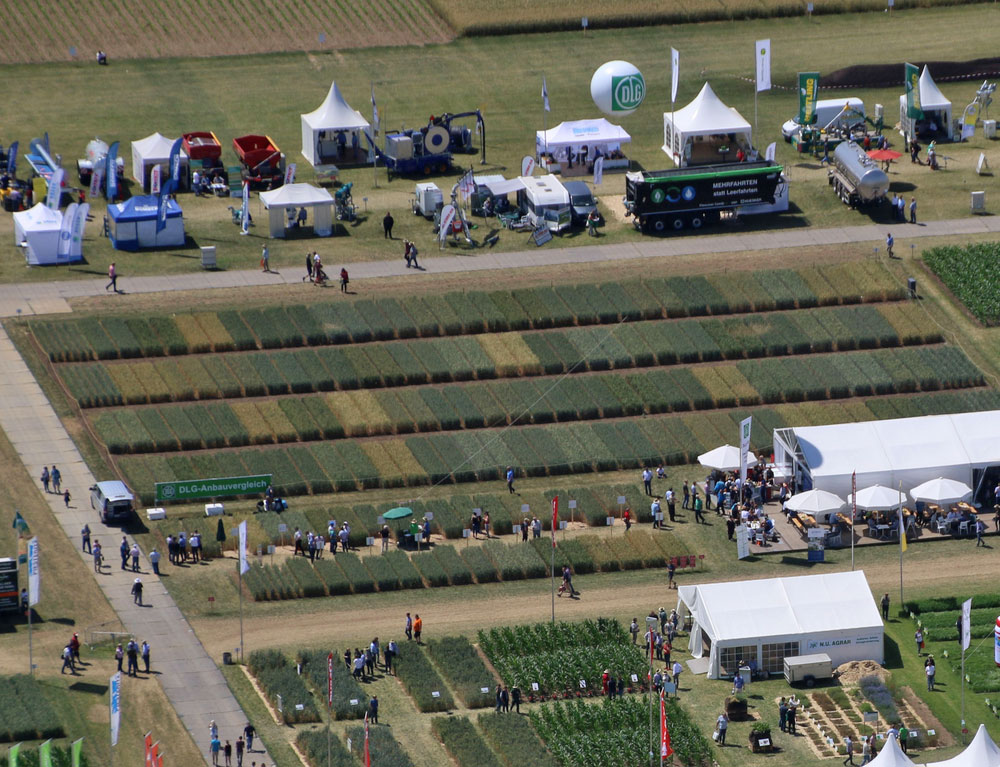Winter Wheat International/Winter Wheat Cultivation Comparison
How do other European countries produce wheat compared to Germany? - this is a fixed point in the history of the DLG Field Days at the DLG stand. The European Cultivation Comparison makes it possible to present the cultivation methods of experts from different regions of Europe in the trial field. This event has always been used for the exchange of experience between farmers from Europe.
At the plots, discussions take place about which aspects are decisive for an optimal cultivation method. They talk about grain yield per hectare, grain quality and, above all, nitrogen use efficiency. Nevertheless, farmers remain entrepreneurs, which is why the economic efficiency of the methods shown, while complying with environmental requirements, is very important. However, this is where the discussion already begins, whether it is about the lowest unit costs per decitonne of product or the highest direct cost-free output per hectare. These questions alone allow for a variety of variations in cultivation methods.
At this year's DLG Field Days in Kirschgartshausen, different philosophies of crop management in winter wheat will again be compared. Teams from Denmark, the Czech Republic, Switzerland, Sweden, Germany and the Ukraine will present their different cultivation strategies. Courage for unconventional strategies is the motto and should create new ideas in wheat cultivation.
With dry and hot weather conditions of the upper Rhine Graben, the conditions on site differ significantly from the home conditions of most participants. Whether this is an advantage for the home team of the LTZ Augustenberg will be shown at the field days in June. Perhaps it will be shown again this time that other methods can also lead to excellent results. This year, too, the approaches of the participants are very different:
Prof. Jan Kren from Mendel University in Brno (Czech Republic) and his team are focusing on the indigenous drought-tolerant variety "Skif" with reduced nitrogen intensity.
Professor Svitlana Kalenska from the Agricultural University of Kiev (Ukraine) is pursuing a similar goal. She uses the early green variety "Macaron" and sets a low seed rate to ensure good individual plant development.
Farmer Albin Gunnarsson from 10-tonsklubben (Sweden) uses his variety "Kask" to increase yields through improved nitrogen efficiency and targeted chemical crop protection.
Martin Bertschi from Team Strickhof (Switzerland) grows his native variety "Montalbano". Mr Bertschi relies on mechanical weed control, robust varieties and does not use growth regulators or fungicides.
Dr Gerd Joachim Sauter from the Agricultural Technology Centre Augustenberg in Karlsruhe (Germany) is the "top dog" among the participants. Dr Sauter uses the Cultan method for nitrogen application.
Morten Eshøj is a newcomer to the DLG Field Days, although his organisation Patriotisk Selskab from Odense (Denmark) is one of the long-standing participants. He presents the Danish philosophy of wheat production.
Judge for yourself how the experiences and measures from the participants' countries of origin can be implemented at the Kirschgartshausen site. As a visitor, you can discuss this together with the participants directly on site at the plots in a personal conversation.

